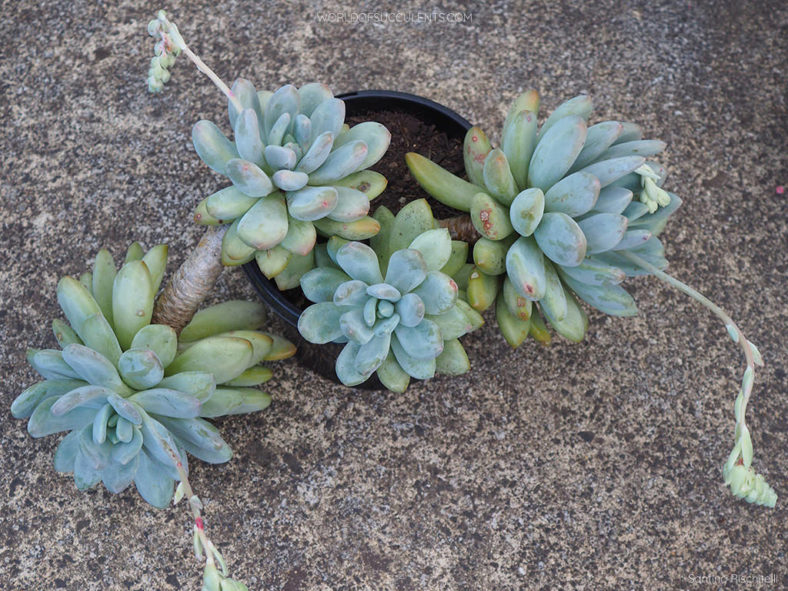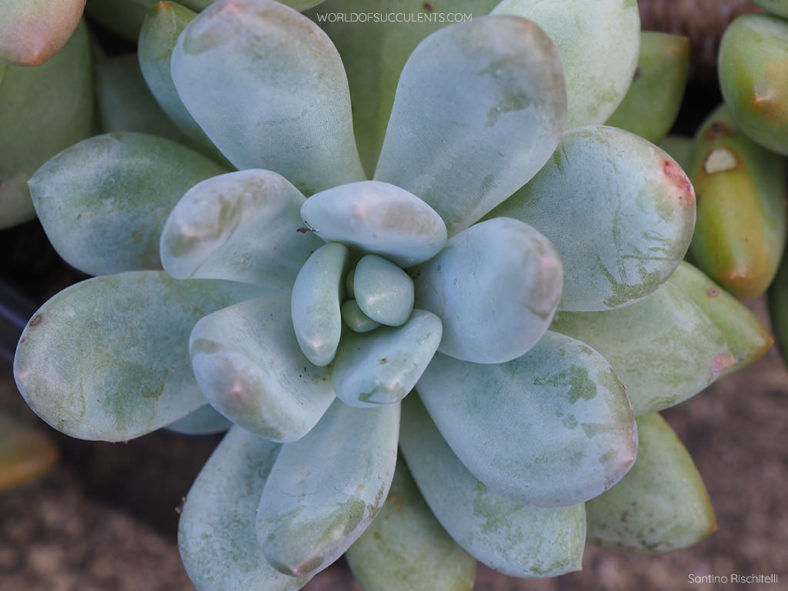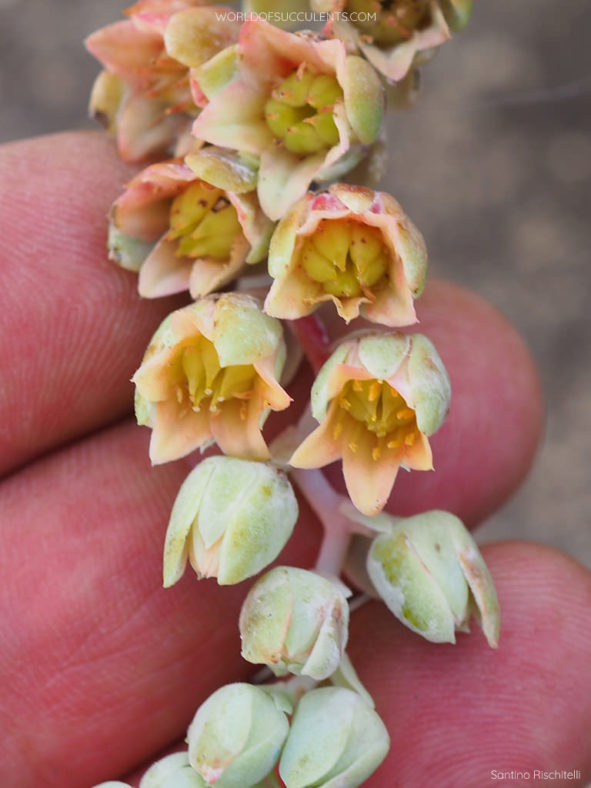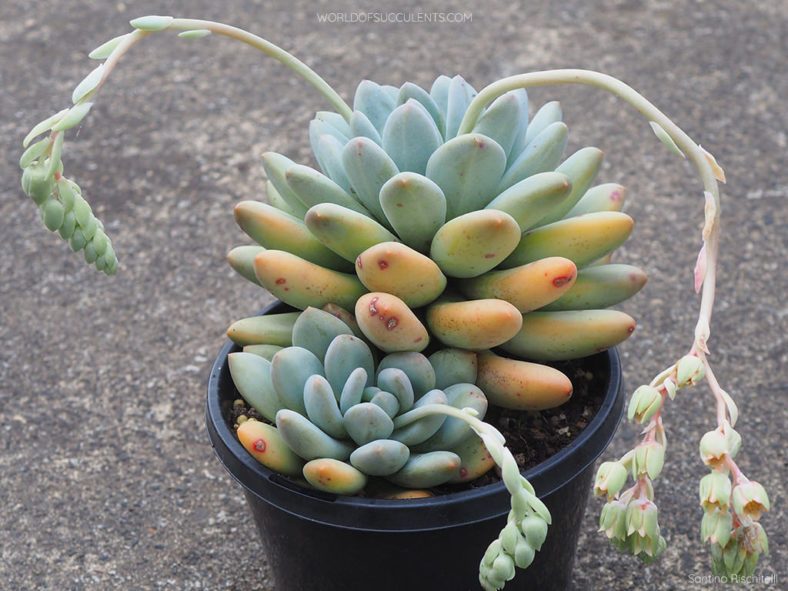Scientific Name
×Pachyveria 'Elaine'
Scientific Classification
Family: Crassulaceae
Subfamily: Sempervivoideae
Tribe: Sedeae
Nothogenus: ×Pachyveria
Origin
×Pachyveria 'Elaine' is a hybrid created by Frank Reinelt. It results from a cross between Echeveria colorata 'Lindsayana' and Pachyphytum oviferum.
Description
×Pachyveria 'Elaine' is a beautiful branched succulent with short stems that terminate in a dense rosette of thick, fleshy, blue-green leaves covered with a powdery bloom. The leaves have pinkish or brownish tips and take on yellow hues in the summer sunlight.
The flowers are bell-shaped, with yellowish or reddish petals covered with sepals the same color as the leaves. They appear in clusters on arching stalks, usually in summer.

How to Grow and Care for ×Pachyveria 'Elaine'
Light: ×P. 'Elaine' prefers full sun to partial shade. If you move your plant outside in the spring, do it gradually. The intense afternoon sun can cause sunburn. During the winter, put your ×P. 'Elaine' near the brightest window in your home. It will stretch if it does not have enough sunlight.
Soil: This succulent needs a potting soil mix that drains quickly. Many growers create their own mix, but commercial succulent potting mixes will also work well.
Temperature: This plant is a tender succulent, which means it must be brought indoors for the winter to survive. ×P. 'Elaine' can withstand temperatures as low as 30 °F (-1.1 °C). USDA Plant Hardiness Zones 10a to 11b, 30 to 50 °F (-1.1 to 10 °C).
Watering: Provide moderate amounts of water from spring to fall. The "soak and dry" method is the preferred schedule for watering ×P. 'Elaine'. If you have saucers under the pots, empty the water briefly. Water your plant just enough to keep it from shriveling during winter.
Fertilizing: ×P. 'Elaine' grows well without fertilizer but will benefit from extra nutrients. In spring, use a slow-release or a liquid fertilizer diluted 2 to 4 times more than usual and used less often than recommended.
Repotting: Repot the plant only as needed during spring or early summer when it grows actively. To repot your ×P. 'Elaine', ensure the soil is dry before repotting.
Propagation: This succulent is usually propagated from leaves or stem cuttings. Spring is the best time to take cuttings.
Learn more at How to Grow and Care for Echeveria.
Toxicity of ×Pachyveria 'Elaine'
×P. 'Elaine' has no toxic effects reported. It is safe around pets and humans, although it is not advisable to eat it.
Links
- Back to nothogenus ×Pachyveria
- Succupedia: Browse succulents by Scientific Name, Common Name, Genus, Family, USDA Hardiness Zone, Origin, or cacti by Genus
Photo Gallery
Click on a photo to see a larger version.


